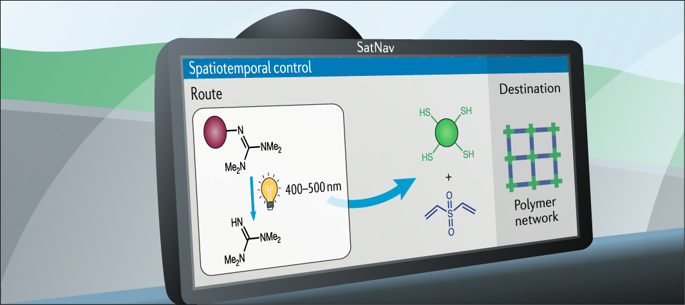Nature Reviews Chemistry ( IF 36.3 ) Pub Date : 2019-10-24 , DOI: 10.1038/s41570-019-0139-6 Sidonie Aubert , Marine Bezagu , Alan C. Spivey , Stellios Arseniyadis

|
Controlling the where and when of a chemical reaction, rather than just the if, can be an essential component in the successful development of applications. There are a large number of situations in which a predetermined sequence of chemical reaction events might be highly beneficial. In this Review, we examine the development of such spatiotemporal control of chemical reactions. We classify the means of control into either passive or active approaches. The passive approach relies on characteristics inherent to the chosen chemical system in order to predict where and when a reaction will occur. The active strategy, on the other hand, relies on the input of an external stimulus to remotely control the onset of a chemical reaction. Among active methods, we distinguish two different strategies — either remote activation of a reaction or controlled release of chemicals. This versatile toolbox allows spatiotemporal control to be achieved in myriad situations and thus to address some key challenges in chemistry, such as drug delivery.
中文翻译:

化学过程的时空控制
控制化学反应的时间和地点,而不只是控制化学反应,是成功开发应用程序的重要组成部分。在许多情况下,化学反应事件的预定顺序可能会非常有益。在这篇综述中,我们研究了化学反应的这种时空控制的发展。我们将控制方法分为被动方法或主动方法。被动方法依赖于所选化学系统固有的特性,以便预测发生反应的地点和时间。另一方面,主动策略依靠外部刺激的输入来远程控制化学反应的发生。在主动方法中,我们区分两种不同的策略-远程激活反应或控制释放化学物质。这个多功能的工具箱允许在多种情况下实现时空控制,从而解决化学方面的一些关键挑战,例如药物输送。


























 京公网安备 11010802027423号
京公网安备 11010802027423号